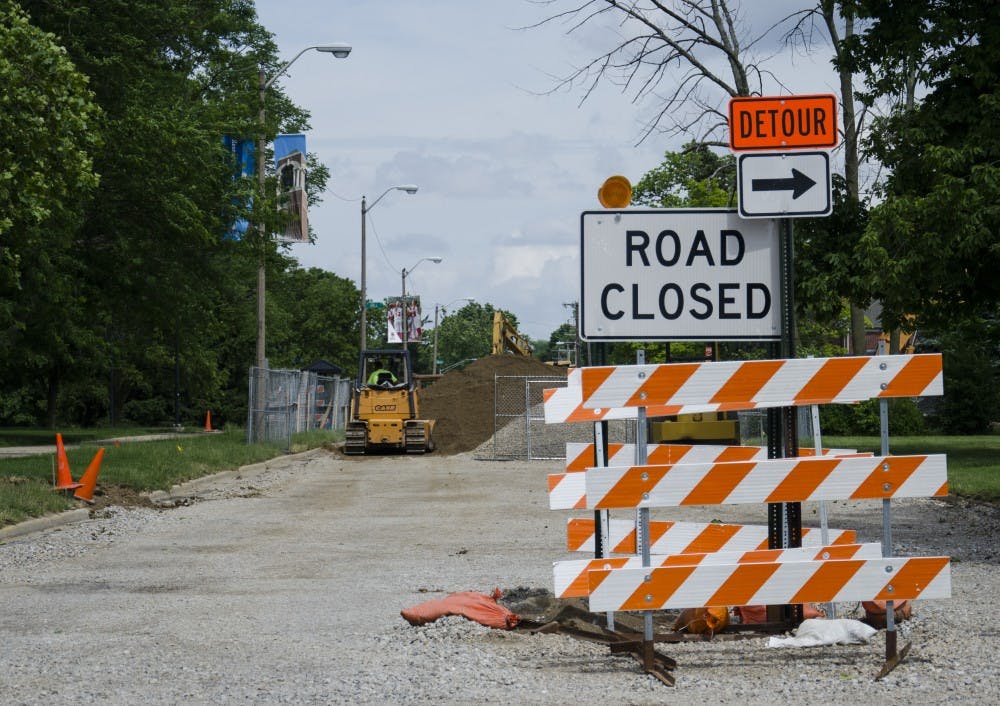Editor's note: A previous version of this story reported Robert Koester focused on removing carbon emission from Ball State. Koester reports on the university’s removal of carbon dioxide equivalents. Koester’s quote was also inaccurate, and has been updated online. The Daily News also inaccurately reported President Paul W. Ferguson is the vice chair on Ball State’s Council on the Environment. Ferguson is the vice chair of the American College and University Presidents’ Climate Commitment steering committee.
Ball State is getting close to being heated entirely through the nation's largest geothermal system.
The university's effort to switch over to a geothermal heating and cooling system is in its final stages after construction on Riverside Avenue wrapped up in early August.
During the construction, the university installed a water distribution system that loops around DeHority Complex. This water distributor connects to piping that can heat and cool a majority of campus, said Jim Lowe, director of engineering, construction and operations.
“The whole project is undertaken in little phases," Lowe said. "So there have been multiple projects and the final pieces will be put together in the next 12 to 14 months."
In addition to the Riverside construction, geothermal heating in West Quad, Burkhardt Building and Ball Gymnasium was completed over the summer. The Administration Building will be heated by the first of September, Lowe said.
Robert Koester, director of the Center for Energy Research, Education and Service, has been involved in the project with Lowe. Koester’s role is in helping the university report on its removal of carbon dioxide equivalent from Ball State and other companies entirely.
When the project began in 2008, the goal was to reduce Ball State’s yearly energy consumption by 175,000 square British Thermal Units (BTU), the amount of energy needed to change the temperature of water by one degree Fahrenheit.
“Think of it this way — one metric ton of CO2 equivalent can be visualized as equivalent to the volume of a hot air balloon. By stopping the on campus combustion of coal, the university eliminated some 85,000 hot air balloons of CO2 equivalent emissions," Koester said. "Because of the elimination of coal combustion on campus, we are not belching all that crap into the atmosphere anymore."
The geothermal project is the largest ground source of heating in the country, according to energy.gov. Because of this project, BSU has been recognized as the 50th greenest college in the country in the Princeton Review.
President Paul W. Ferguson is the vice chair of the American College and University Presidents’ Climate Commitment steering committee, and he said Ball State is in a good position to be a leader in national sustainability.
“I think Ball State is going to continue to be a very strong leader in sustainability," Ferguson said. "We’re highlighted in the state of Indiana as one of the greenest campuses and I am very proud of that. I am proud to carry on that very good tradition."
The final project will take place in summer of 2016, involving construction on University Ave. The construction will include Burris Laboratory School, the L.A. Pittenger Student Center, Lucina Hall, Elliott Hall and Wagoner Complex.





